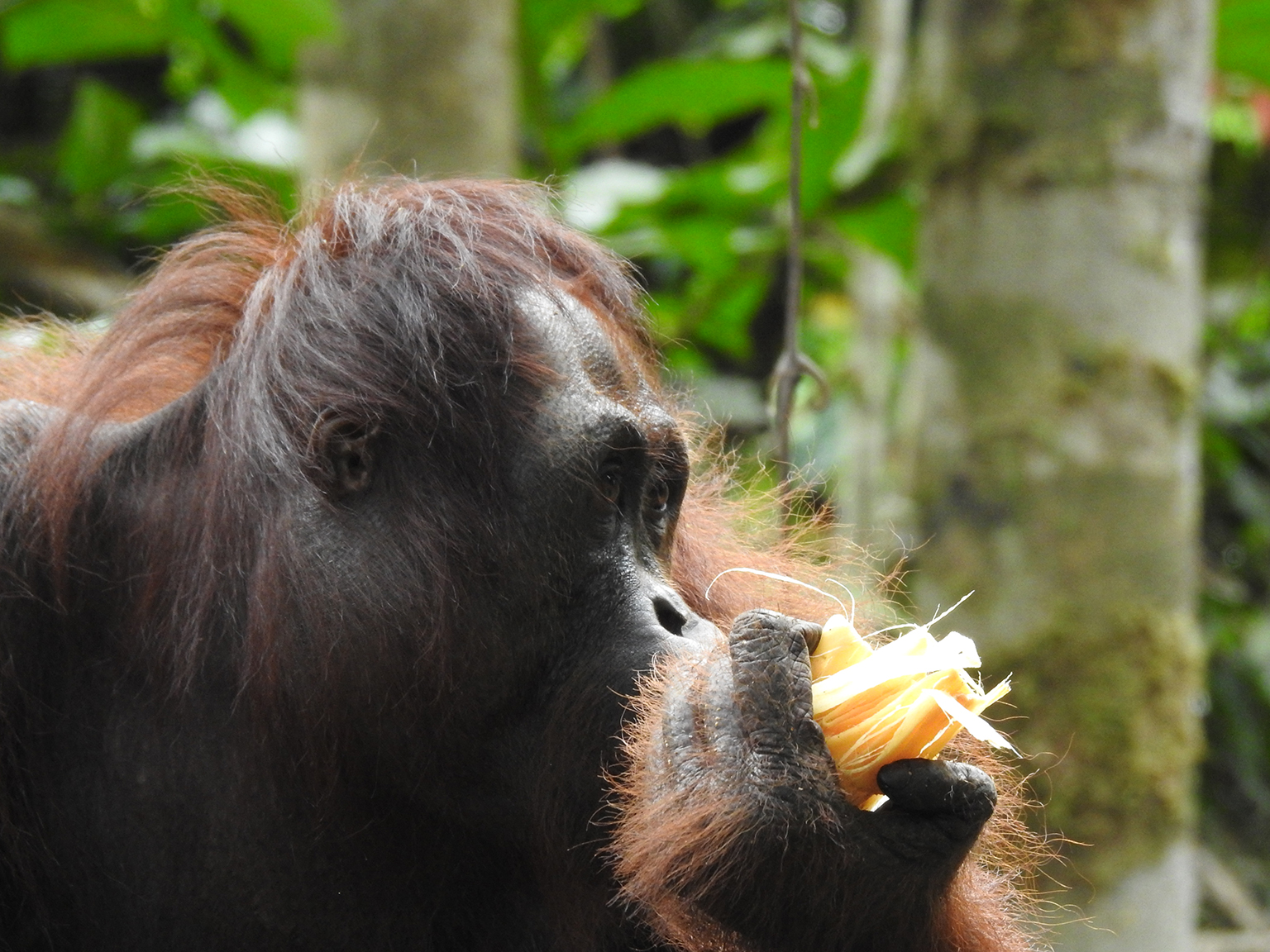BOS Foundation: Top 10 Orangutan Survival Skills

Text by: BOS Foundation Communication Team
The Borneo Orangutan Survival Foundation (BOSF) cares for and rehabilitates orangutans at its two centers, Nyaru Menteng in Central Kalimantan and Samboja Lestari in East Kalimantan, with the aim of releasing them back to the forest once they are ready for independence. In order to do that, the staff needs to help the orangutans learn the various life skills that they will need to survive in the wild unaided by humans. These skills are taught directly by the dedicated surrogate mothers and technicians in Forest School.
We now present to you 10 of the most important skills the orangutans must master!
Survival Skill #1 - Nest Building
Wild orangutans build nests high up in the trees to rest in during the day and sleep in at night. Up in the treetops, orangutans are safe from the dangers lurking on the forest floor. Check out the Forest School students gathering branches as they would in the wild, practicing this basic survival skill.
Survival Skill #2 - Predator Avoidance
Aside from humans, orangutans have very few natural predators. Young orangutans are the most susceptible to forest predators, like clouded leopards, crocodiles, large pythons, and venomous snakes. Awareness of the dangers posed by these animals is vital knowledge that our orphaned orangutans must learn.
Survival Skill #3 - Tree Swaying
Orangutans often use their own weight to bend the trunks of small trees and branches to propel themselves from tree to tree. This is an important skill to learn in Forest School, as it is a more efficient and safe way to travel than climbing down one tree to the forest floor and up the next.
Survival Skill #4 - Climbing
Orphaned orangutans need regular tree-climbing practice to master this essential survival skill. The basis of any sound locomotion skillset for orangutans is the ability to climb up and down tall trees with ease. Several of our caregivers are trained in tree climbing and will climb alongside the orphaned orangutans in their care to encourage them to spend more time in the trees.
Survival Skill #5 - Brachiating
As the largest arboreal animal on Earth, an orangutan’s weight would restrict their access to many areas and food sources if they only walked on top of branches. In the forest, orangutans swing hand over hand from one branch to another, in a form of locomotion known as brachiating. Being able to move under multiple branches means orangutans can move more freely through the forest. Our Forest School students learn this practical skill from observing and copying one another.
Survival Skill #6 - Fruit Eating
While orangutans eat a wide variety of forest foods, their preferred food item is fruit! Dependent on season and location, orangutans can feed on hundreds of different species of wild fruits. Thus, it is critical that they can identify what fruits are safe to eat and learn how to open them. Eating whole, soft fruits like wild fig and guava is pretty straight forward, but our Forest School students also need to know how to access fruits with hard exteriors like durian and coconut, which require cracking, peeling, and breaking to reach the pulp and seeds within.
Survival Skill #7 - Bark Stripping
Cambium, a juicy layer beneath a tree’s bark, is an important food source for orangutans during the dry season. At Forest School, our skilled caregivers show the orangutans how to peel back the bark of specific trees, scrape off the soft cambium with their teeth, chew and ingest what is nutritious, and spit out the inedible fibers!
Survival Skill #8 - Invertebrate Eating
Termites, ants, and bee larvae also form a significant part of an orangutan’s diet. Termites in particular are readily accessible on the forest floor, and due to their high protein content are an important part of an orangutan’s diet. In Forest School, students are shown how to break off chunks of rotting wood and then suck out the termites within!
Survival Skill #9 - Pith Extraction
Peeling back the protective exterior of a plant exposes its soft, inner pith. The pith of many types of plants is an important food source for orangutans, with the pith of rattan being an orangutan diet staple. In the forest, rattan is plentiful and available throughout the year, regardless of season. It is crucial that an orangutan knows how to spot edible rattan and peel away its spiky exterior to reveal the soft pith inside.
Survival Skill #10 - Leaf Eating
Of the preferred foods for orangutans, leaves are typically not high on the list. However, they are still an important and plentiful food source; especially young leaf shoots that are more tender and nutritious than their mature counterparts. The orangutans in our care pay close attention to their surrogate mothers, who teach them which leaves are safe to eat and where to find them.
